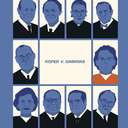
On June 26, 2025, more than 200 Californians and representatives of civil rights organizations gathered at the state Capitol to urge California Governor Gavin Newsom to commute all death sentences. Speakers at the gathering called California’s death penalty statute unconstitutional and noted persistent evidence of racial bias, historic ties to lynching, ineffective protection of innocent lives, and high costs. California, home to the nation’s largest death row, is currently experiencing an energized discussion around allegations of racial discrimination and structural inequities in capital prosecutions, including a mass clemency campaign, individualized relief under the state’s Racial Justice Act, and an equal protection-based state constitutional challenge. Many of these challenges are supported by data and analysis recently catalogued by a group of researchers led by Catherine Grasso.
“California’s death penalty system is not only broken, it is deeply racist and unconstitutional[.]”
Lisa Holder, President of the Equal Justice Society and a former member of the California Reparations Task Force, attended the June 26th event and “traced the lineage of the death penalty from slavery and lynching to the modern criminal legal system.” She condemned the exclusion of Black jurors, lawyers, and witnesses “from testifying against white defendants” in the past and asserted there is no way to administer the death penalty “bias-free.”
Dorothy Ehrlich, former deputy executive director of the American Civil Liberties Union, drew attention to problems including race, innocence, and cost. She noted “[s]ince California reinstated the death penalty in 1977, eight Californians have been exonerated and released from death row… [a]ll were men of color.” Regarding the high cost of the maintaining the death penalty, Ms. Ehrlich said, “California has spent $5 billion on the death penalty since 1977.”
“[In California] Black defendants are up to 8.7 times more likely and Latino defendants are up to 6.2 times more likely to be sentenced to death than all other defendants. Defendants of all races are up to 8.8 times more likely to be condemned when at least one of the victims is White.”
Many of the arguments made by advocates at the rally find support in empirical research documenting equitable disparities that arise in criminal proceedings. These disparities can be especially pronounced in the context of capital punishment, where race continues to play a significant role in determining who is sentenced to death. A recent review of the legal and social science research by Catherine M. Grosso, Michael Laurence, and Jeffrey Fagan examines over 115 different studies, scholarly articles, laws, and precedent cases, spanning from 1978 to 2024, to document “the multiple paths through which institutions and processes produce[d] these racial disparities[.]” The review focuses on the discretion and decisions of key players — including prosecutors, defense attorneys, judges, and jurors — which can be influenced by both explicit and implicit racial biases and have been shown to contribute to racially disparate outcomes. Relevant literature is catalogued by decision, institution, or actor, tied to key findings, laying out a roadmap for readers who want to know more about what the authors call the “recurring and pervasive influence of race in the application of California’s death penalty.”
“California’s death penalty scheme [ ] from its inception infuses virtually unlimited discretion in who may be charged with a capitally eligible crime and proceeds through a process in which conscious and implicit biases influences who is sentenced to death.”
Grosso et al. examined studies focused on prosecutorial discretion — including the decision to charge an individual or offer a plea deal — to document racial disparities in charging and sentencing. They note, “California’s death penalty scheme [] from its inception infuses virtually unlimited discretion in who may be charged with a capitally eligible crime and proceeds through a process in which conscious and implicit biases influences who is sentenced to death.”
Both the process of jury selection and then the actions of individual jurors present opportunities to influence whether a defendant is sentenced to death. Citing to studies, the authors note that “[b]oth jury selection and jury decision making may contribute to the racial disparities observed in the administration of the death penalty in California” including by undermining diversity through the exclusion of Black jurors.
Judges also came under scrutiny. Noting that “[u]ntil 2002, California judges remained overwhelmingly white and male” the authors cite to studies that suggest “the composition of the judiciary as a whole … greatly informs the overall kinds of decisions that judges will yield.” The authors also draw attention to a particularly comprehensive study that investigated how age, sex, race, political ideology, and the number of years on the bench impacts judicial behavior, noting that “[w]hen these expectations correlate with race, cues from expectations can contribute to observed racial disparities in death sentencing.”
Chris Benson, Rights groups urge Calif. governor to grant clemency to all on death row; California’s Death Row; David Greenwald, Call for Universal Clemency from Civil Rights Leaders; Catherine M. Grosso, Michael Laurence, and Jeffrey Fagan, “Processes That Produce Racial Disparities in California Death Sentences”

